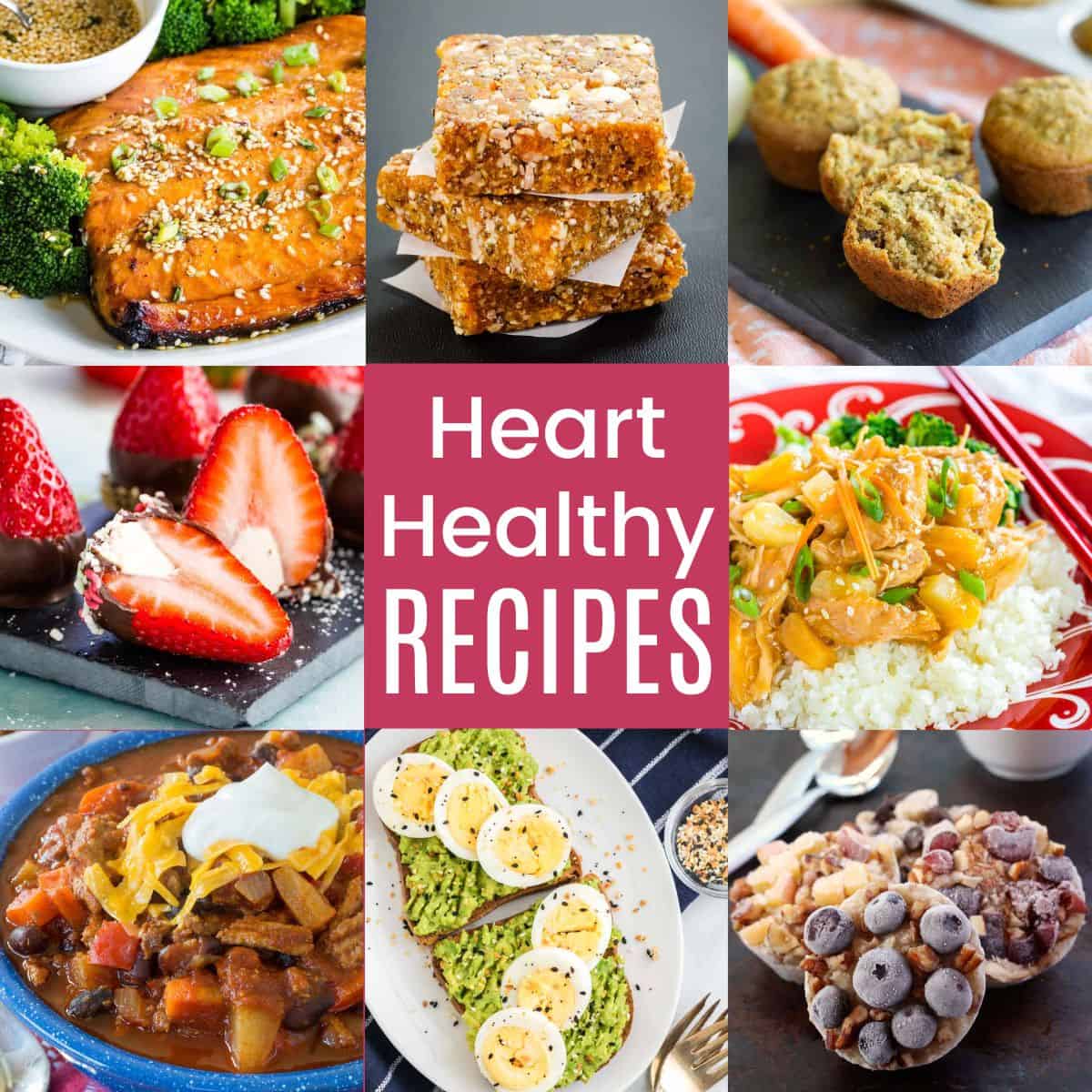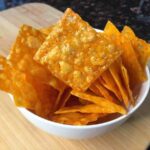Embark on a culinary journey to a healthier heart with this collection of oil-free, low-carb recipes. Discover how vibrant flavors and satisfying textures can be achieved without relying on unhealthy fats. This guide delves into the science behind this heart-healthy approach, providing practical strategies, delicious recipes, and insightful tips to simplify your transition to a low-carb, oil-free lifestyle. Prepare to experience the transformative power of food as you nourish your body and protect your heart.
From understanding the cardiovascular benefits of reduced saturated fat and increased fiber to mastering oil-free cooking techniques and creating flavorful substitutions, this guide empowers you to take control of your heart health through mindful eating. Learn to transform everyday meals into delicious, heart-healthy creations, making healthy eating a joyful and sustainable part of your life. Imagine vibrant salads bursting with color, savory vegetable stir-fries fragrant with aromatic spices, and satisfying main courses that are both light and nourishing.
Understanding the Health Benefits
Embracing an oil-free, low-carb diet offers a powerful pathway to improved cardiovascular health. By significantly altering the composition of your diet, you can positively influence several key risk factors for heart disease, leading to a healthier heart and reduced risk of serious complications. This approach focuses on nutrient-dense whole foods, minimizing processed ingredients and unhealthy fats.
Cardiovascular Benefits of a Low-Carb, Oil-Free Diet
A low-carb, oil-free diet can contribute to significant improvements in cardiovascular health through several mechanisms. By reducing carbohydrate intake, the body shifts its primary fuel source from glucose to fat, leading to a decrease in insulin levels. Lower insulin levels can help improve blood sugar control, a critical factor in preventing the development of type 2 diabetes, a major risk factor for heart disease. Furthermore, this dietary approach often results in weight loss, reducing strain on the heart and improving blood pressure. The absence of added oils further contributes to a lower overall calorie intake and a reduction in unhealthy fats. The combined effect of these factors contributes to a lower risk of heart disease, stroke, and other cardiovascular complications.
Reduced Saturated Fat Intake and Heart Health
Saturated fats, often found in animal products and some plant-based foods, are linked to increased levels of LDL cholesterol (“bad” cholesterol), a key contributor to the buildup of plaque in arteries (atherosclerosis). A low-carb, oil-free diet naturally limits the intake of saturated fats by focusing on lean protein sources, such as poultry without skin, fish, and beans, and emphasizing non-starchy vegetables. By reducing saturated fat consumption, you lower your LDL cholesterol levels, thus reducing your risk of heart disease. For example, choosing grilled chicken breast over fried chicken significantly reduces saturated fat intake. This simple swap illustrates the impact of cooking method and food choices on heart health within this dietary framework.
The Role of Fiber in Maintaining Healthy Cholesterol Levels
Dietary fiber, abundant in many low-carb, oil-free friendly foods like leafy greens, broccoli, and avocados, plays a crucial role in maintaining healthy cholesterol levels. Soluble fiber, in particular, binds to cholesterol in the digestive tract, preventing its absorption into the bloodstream. This helps lower LDL cholesterol levels and improve overall cholesterol profile. Insoluble fiber promotes regular bowel movements, aiding in the elimination of waste products. A diet rich in fiber-rich vegetables and fruits is, therefore, integral to this approach to heart health. Consider the significant fiber content in a serving of Brussels sprouts compared to a processed snack; the difference is striking.
Nutritional Profiles of High-Fat vs. Low-Fat Cooking Methods
A comparison of high-fat and low-fat cooking methods reveals a stark contrast in nutritional profiles within the context of this diet. High-fat methods, such as deep frying or using excessive amounts of butter or oil, drastically increase the calorie and saturated fat content of dishes. For example, deep-fried vegetables contain significantly more calories and saturated fat than steamed or roasted vegetables. In contrast, low-fat methods, such as baking, steaming, grilling, or stir-frying with minimal oil (or oil substitutes like cooking spray), preserve the nutritional value of the ingredients while keeping the calorie and fat content significantly lower. This difference is crucial for maintaining a healthy heart within the framework of a low-carb, oil-free diet. Choosing healthier cooking methods is a key component of success with this approach.
Essential Recipe Components & Substitutions
Creating delicious and heart-healthy oil-free, low-carb meals requires a strategic approach to ingredients. Understanding suitable substitutions and flavor-enhancing techniques is key to achieving both nutritional goals and culinary satisfaction. This section will guide you through essential components and their healthier alternatives.
Oil-Free Cooking Alternatives
Many recipes rely on oil for cooking and flavor. However, numerous healthy alternatives exist that provide similar results without the added fat and calories. These options maintain the texture and taste of your dishes while supporting your heart-healthy lifestyle.
- Water: A simple yet effective option for sautéing vegetables or cooking grains. The gentle heat of water helps to retain nutrients and create a light, healthy dish.
- Unsweetened Applesauce: Adds moisture and sweetness to baked goods, replacing oil in muffins and cakes. The natural sweetness complements savory dishes as well.
- Mashed Avocado: Creates a creamy texture in sauces and dressings, acting as a healthy fat replacement for a richer mouthfeel.
- Bone Broth: Provides a savory base for soups and stews, adding depth of flavor and nutrients without added oil.
- Vegetable Broth: A versatile option for cooking vegetables, grains, and legumes, delivering flavor and moisture.
Low-Carb Vegetable Nutritional Comparison
Choosing the right vegetables is crucial for maintaining a low-carb diet while maximizing nutritional benefits. The following table compares popular low-carb options.
| Vegetable | Carbohydrates (g/100g) | Fiber (g/100g) | Vitamins & Minerals |
|---|---|---|---|
| Spinach | 3.6 | 2.2 | Vitamins A, C, K, folate, iron, potassium |
| Broccoli | 6.6 | 2.6 | Vitamins C, K, folate, fiber, potassium |
| Cauliflower | 5.2 | 2.0 | Vitamins C, K, folate, fiber |
| Green Beans | 7.4 | 4.0 | Vitamins A, C, K, folate, fiber, potassium |
Flavor Enhancement with Spices and Herbs
Spices and herbs are powerful tools for creating flavorful oil-free dishes. Their aromatic compounds add depth and complexity, making it unnecessary to rely on oil for taste.
- Garlic and Onion: Foundational aromatics that enhance almost any dish.
- Ginger: Adds warmth and a slightly spicy note to both savory and sweet dishes.
- Chili Powder: Provides heat and complexity, complementing many cuisines.
- Cumin: Earthy and warm, ideal for Mexican and Indian-inspired recipes.
- Rosemary and Thyme: Classic herbs that pair well with roasted vegetables and meats.
High-Carb Ingredient Substitutions
Successfully transitioning to a low-carb diet involves substituting high-carb ingredients with low-carb alternatives. This maintains the structure and texture of your favorite recipes.
- Pasta: Replace traditional pasta with zucchini noodles (zoodles), shirataki noodles, or kelp noodles for a low-carb alternative that mimics the texture of pasta.
- Bread: Use cauliflower mash or almond flour to make low-carb bread or pizza crusts, offering a satisfying alternative to traditional bread.
- Rice: Cauliflower rice is a popular replacement for white rice, providing a similar texture while significantly reducing carbohydrate intake. Shirataki rice is another good option.
- Sugar: Stevia, erythritol, and monk fruit are natural sweeteners that can replace sugar in recipes without adding carbohydrates.
Recipe Creation & Step-by-Step Guidance

Creating delicious and heart-healthy oil-free, low-carb recipes requires careful planning and execution. This section details the process of developing a recipe, from initial concept to the final, flavorful dish, emphasizing ingredient selection, portion control, and cooking techniques. We will walk through the creation of a vibrant and satisfying recipe, showcasing the step-by-step process.
Developing a Recipe: Spicy Shrimp and Cauliflower Rice
This recipe focuses on creating a flavorful, low-carb, and oil-free meal using shrimp and cauliflower rice. The process involves selecting appropriate ingredients, considering portion sizes for a balanced meal, and employing cooking methods that enhance both taste and nutritional value.
Ingredient Selection and Portion Control
The core ingredients for our Spicy Shrimp and Cauliflower Rice are: 1 pound of shrimp (peeled and deveined), 1 large head of cauliflower (riced), 1 red bell pepper (finely chopped), 1/2 cup chopped cilantro, 1 jalapeño pepper (minced – remove seeds for less heat), 2 cloves garlic (minced), 1 lime (juiced), and a blend of spices (cumin, chili powder, paprika). Portion control is crucial for maintaining a low-carb diet. This recipe provides a single serving, easily scalable for more. The shrimp provides lean protein, cauliflower offers a low-carb alternative to rice, and the vegetables contribute vitamins and fiber. Spices add flavor without adding unnecessary calories or fat.
Cooking Techniques and Step-by-Step Instructions
First, rice the cauliflower using a food processor or grater. The resulting texture should resemble rice grains. Next, sauté the red bell pepper and jalapeño in a large skillet over medium heat with a spray of cooking spray (or no oil if your pan is non-stick). Cook until slightly softened, about 5 minutes. Add the minced garlic and cook for another minute until fragrant. The aroma at this stage will be a vibrant blend of sweet bell pepper and pungent garlic. The visual appearance will be a colorful mix of red and green. Stir in the spices (cumin, chili powder, paprika), ensuring even distribution.
Then, add the riced cauliflower and cook for another 5-7 minutes, stirring occasionally, until slightly tender. The cauliflower will have a slightly softened texture, and the spices will have infused the rice, creating a warm, earthy aroma with a hint of spice. The color will be a warm, spiced beige.
Add the shrimp to the skillet and cook for 3-5 minutes per side, until pink and opaque. The shrimp will turn a beautiful, vibrant pink, indicating they are cooked through. The texture will be firm and juicy. Finally, stir in the lime juice and cilantro. The lime juice brightens the flavors, adding a citrusy tang, while the cilantro provides a fresh, herbaceous note. The final dish will have a lively, fragrant aroma, a blend of spicy, citrusy, and herbal notes.
Flowchart for Spicy Shrimp and Cauliflower Rice
[Imagine a flowchart here. The flowchart would begin with “Rice Cauliflower,” followed by “Sauté Peppers and Jalapeño,” then “Add Garlic and Spices,” followed by “Add Cauliflower Rice,” then “Add Shrimp,” and finally “Stir in Lime Juice and Cilantro.” Each step would visually connect to the next with arrows.]
Sensory Description of the Finished Dish
The finished Spicy Shrimp and Cauliflower Rice is a vibrant dish. The cauliflower rice is a soft, yet slightly firm, offering a pleasant textural contrast to the tender, juicy shrimp. The aroma is a captivating blend of spicy chili powder, earthy cumin, and the bright citrus of lime, interwoven with the fresh herbaceousness of cilantro. Visually, the dish is appealing with the bright red bell pepper, the pale beige of the cauliflower rice, and the vibrant pink of the perfectly cooked shrimp, all punctuated by the bright green of the cilantro. The overall effect is a colorful and inviting dish that promises a burst of flavor.
This exploration of oil-free, low-carb cooking for a healthy heart concludes with a renewed appreciation for the power of food as medicine. By embracing this dietary approach, you’ve unlocked a path towards improved cardiovascular health, enhanced energy levels, and a more vibrant you. Remember that consistency and mindful choices are key, and the recipes and tips provided here serve as a springboard for your continued culinary adventures on this heart-healthy journey. Enjoy the delicious and rewarding results!
Key Questions Answered
Can I still enjoy desserts on a low-carb, oil-free diet?
Absolutely! Many delicious low-carb, oil-free desserts exist, often utilizing alternative sweeteners and healthy fats like avocado or coconut flour. Experiment with recipes focusing on berries, nuts, and seeds.
How do I manage potential nutrient deficiencies on this diet?
Careful meal planning and possibly supplementation are key. Ensure a diverse range of low-carb vegetables to obtain essential vitamins and minerals. Consult a doctor or registered dietitian for personalized advice.
What if I experience side effects like fatigue or headaches?
These are common during the initial transition to a low-carb diet, often due to electrolyte imbalances. Increase your water intake, and consider adding electrolytes through broth or supplements. Consult a healthcare professional if symptoms persist.
Is this diet suitable for everyone?
While generally beneficial for many, this diet might not be suitable for everyone. Individuals with certain medical conditions should consult their doctor before making significant dietary changes.


